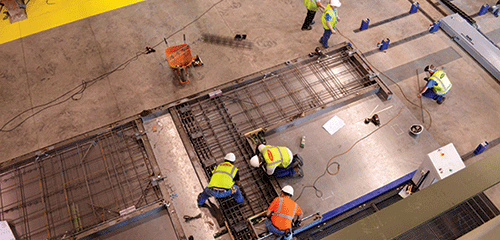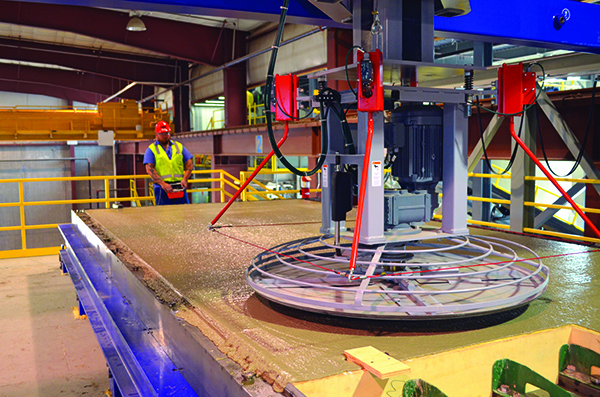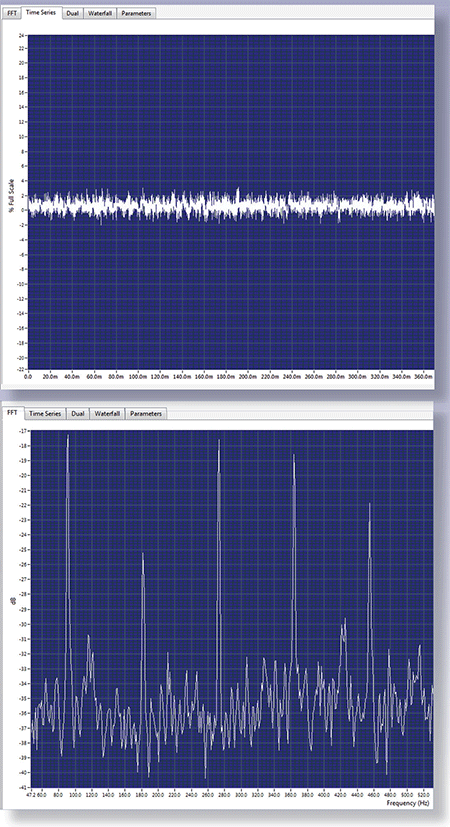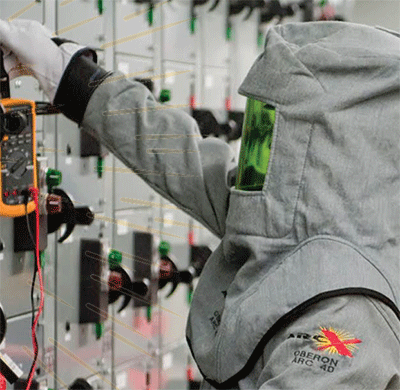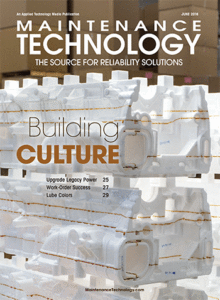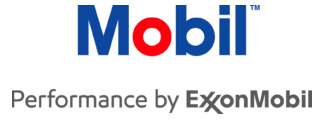Mississippi Lime, a sprawling limestone-processing operation south of St. Louis, has entered the world of reliability with flying colors.
By Rick Carter, Executive Editor
Tom French, site reliability process leader at Mississippi Lime in Ste. Genevieve, MO, is getting more sleep these days. It’s a small pleasure that he counts among many other positive results to emerge from a multi-year, multi-faceted, reliability-improvement process he and his team helped put in place at this limestone-processing operation. Located 65 mi. south of St. Louis along the Mississippi River and perched over what is considered the largest limestone deposit in North America, the privately held company mines, crushes, and processes limestone onsite. It makes a variety of calcium-based products (see sidebar) and bags or bulk-loads them for distribution. The multi-shift, year-round operation is the town’s largest employer and is celebrating its 108th year in business. With headquarters in St. Louis and facilities in several other states, Mississippi Lime is one of the nation’s top lime producers.
To appreciate the reliability improvements the company has made at Ste. Genevieve, it’s important to understand the scope of this operation. Conceptually, the process is simple: Limestone is blasted, drilled, scaled out, and crushed to various sizes (based on customer need) in a very large drive-in mine located directly beneath the plant and many acres surrounding it. It is then moved by conveyors out of the mine to kilns where it is heated in a process known as calcination, which drives off unwanted components. The resulting calcium-based product—lime—is separated by particle size, then loaded into tractor-trailers or bulk-loaded into railcars or bulk-carrier trucks, barges, or bagged for delivery to customers around the world. While output and customer specifications are confidential, the entire process involves only three variables to meet any customer need: size of the crushed lime product, the amount of heat to which it is subjected, and the length of time it is heated.
Mississippi Lime veterans Tom French (left) and John Swafford.
The straightforwardness of this rough-and-tumble process is belied by the severe conditions under which it functions. The enormous outdoor kilns, for example, reach temperatures of 2,500 F, which keep most plant areas in a desert-like state year round. Furthermore, virtually all equipment—from scaler heads that are used to scrape limestone rock from mine walls, to Caterpillar loaders and dump trucks, to the crusher units, conveyors, and high-temperature kilns—is in constant contact with stone. The limestone mined here is not hard enough to be used for structural purposes, but still wreaks havoc with equipment. The demands of working under such conditions, essentially unchanged since the earliest days of limestone processing, had for years left little room to focus on anything else at Ste. Genevieve. Maintenance was a “find and fix” process, and “reliability” meant showing up and working hard.
“We were really good at saving the day,” said French, a 30-yr. Mississippi Lime veteran. “Something could break in the middle of the night and they would fix it, and everyone was high-fiving the next day. They could hardly stay awake, but they saved whatever they saved, and that was the culture. We were fixers, not maintainers.”
General manager Mike Sheffield used his world-class process experience to help the plant develop a reliability culture.
That approach might have persisted into the 21st century if not for two key factors: The uses and demand for lime were growing, and large numbers of longtime employees were reaching retirement age. By the early 2000s, Mississippi Lime was a textbook example of a company poised to rapidly lose a large segment of its institutional knowledge, according to site maintenance manager John Swafford. “We are a premier place to work in this community,” he said, “which was both a good thing and a bad thing for us long term. The company did a lot of hiring in the 1970s, but when these workers started to retire after 40-plus years of service, and newer groups came in behind them, we had difficulty passing that knowledge along. And that has been the real driver for our reliability program.”
The reliability process
In 2005, Mike Sheffield joined Mississippi Lime as an area plant manager and three years later assumed the role of general manager for the entire Ste. Genevieve site. His background included experience at a world-class chemical plant on the East Coast, which stood in stark contrast to what he saw in his new position. “When I came here, it was 180-degrees from my previous job,” he said. “The plant had just started to put in new kiln technologies, but otherwise, you were looking at technology from the ’50s, ’60s, and ’70s. It was like taking a very large step backwards in time. When I got acquainted and started looking at what [maintenance and reliability] systems we had in place, I saw that there weren’t any.”
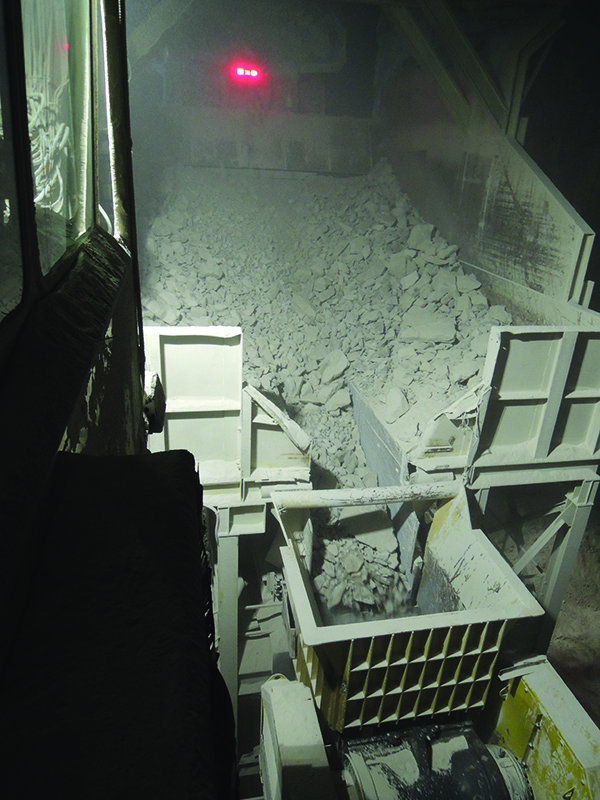
One of two crushers in the limestone mine, the “jawbreaker,” accepts the largest stone, and runs
continuously.
Fortunately, Sheffield and others in management recognized the severity of the double-edged problem the plant faced, and took steps to correct it. By this time, French had risen from production to a supervisory role and, along the way, learned about the plant’s four business units (distinguished by the site’s key processes: mine, rotary kilns, vertical kilns, and packaging/distribution) and how each operated. While commissioning a new bagging facility that involved many long days of troubleshooting, and participating in a newly formed reliability team, French began to see his operation differently.
When asked to step into a reliability position in 2007, he jumped at the opportunity. One of his first reliability learning opportunities involved a critical piece of equipment that had been destroyed due to improper adjustment. “The superintendent at the time cut that equipment in half to show everyone what the inside looked like and how the oil flowed. And when he did that, it was like somebody turned on a light bulb. From that point on, I was jacked up about everything we do regarding reliability.”
By 2008, French was leading small groups of Mississippi Lime maintenance- and production-team members to maintenance-and-reliability conferences, and telling them to keep open minds about what they saw and heard. Some went with reluctance, having experienced previous efforts by consultants that often didn’t click. “It was a real cultural change for us to go from a large maintenance group that was good at what they did within their frame of reference” to accepting new ideas and new people, said Swafford. “In their world everything was working fine, but we had to get more competitive.”
As the company’s workforce and upper management evolved to meet new conditions, so did priorities. “We began to talk about downtime, frequency, on-stream time, and how long it takes to fix things,” said Swafford. “We had to determine how to keep things running longer.” With kilns running 24/7 “like a power plant,” Swafford noted that these units had the biggest influence on maintenance and reliability efforts. When a kiln is down, not only is production lost, so is heat. “It can take a tremendous amount of energy to heat our processes back up before we make one ton of lime,” said Swafford, “so we guard that because it’s money we don’t get back.”
With the mine’s roof-and-pillar support system visible, a loader prepares to drop in limestone that has been scraped from a mine wall.
Swafford explained, “How often you stop is the key. When we first started with our new kiln systems, we were doing work on them regularly. Today, our goal is to stretch our outages further and further using technologies like vibration analysis, oil analysis, thermography, and increased engineering focus. We’re extending our outage duration too, which is also a big expense. We’ve shrunk the length of those outages by 50%. We still have our fair share of firefighting,” he said, adding that the team developed downtime Pareto charts to identify bad actors. “We focus on the chart bars to the left,” said Swafford. “We pick one, solve it, and put it to bed.”
This approach—a TPM-style tactic that focused on overhauling all key equipment—“was tough,” said Swafford. “But when we look back now at some of the things that kept us up at night, we don’t have to mess with that particular issue any more. This means fewer off-shift phone calls, and less getting up in the middle of the night.”
Through improved maintenance and reliability systems, successes began adding up, which freed time to do more. “And we poured it back into PMs and reliability,” said Swafford. “We started oil analysis for all of our critical equipment in the plant, and we started thermography because everything we do here is about heat. The refractory in our kilns, for example, is a high-dollar, high-wear item for us, so we need to know what it looks like. With infrared, we can identify issues much clearer inside and outside. We know where to focus our work, and it allows better decision making regarding the need to shut down or repair online.”
Other tactics include ultrasound, being introduced now, along with the formation of a Reliability Council and an Operational Excellence team; a Reliability “Pillar” program that charts key data such as top maintenance costs and downtime; and pursuit of CMRP certification through the Society for Maintenance & Reliability Professionals (smrp.org). French became the first company employee to receive CMRP certification in 2008, and has since been joined by seven others, with three more scheduled to take the exam in October.
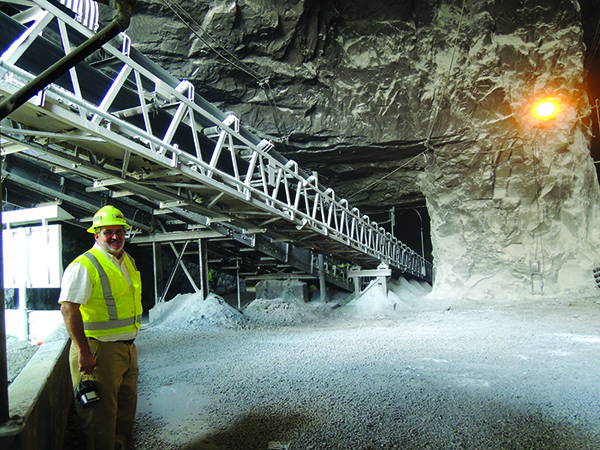
Swafford stands just inside the mine entrance where a conveyor moves crushed limestone out to be heated.
Training a new generation
Though plant reliability and on-stream time were improving, attrition continued. In the first decade of the new millennium, close to half of the plant’s workforce retired. This pace has yet to slow, said Swafford, “which is a downside because we lose years of valuable experience. But the upside now is that when we bring in a new person, all he hears and sees is our current reliability and maintenance process metrics and KPIs.”
In 2007, an apprenticeship program was launched to ensure that new employees only saw the world-class tactics the company now embraced. For some, the apprenticeship includes a fully paid two- or three-year education at Ranken Technical College in St. Louis. “We pay for their entire education going into the crafts,” said Swafford. “And at this school, you have to be there, you have to be dressed for work, and the courses are taught by people who have worked in industry. This training gives our guys core knowledge so they can be put on a pump anywhere in the plant, and figure it out. We still have to educate them on our specialized equipment and our work process,” said Swafford, “but this gives them a good head start.”
Today’s plant workforce differs significantly from that of a decade ago. Many aboard still have high years of service, but even this group has largely picked up on the importance of the company’s focus on reliability. French offered several examples of employees who were given the opportunity to attend offsite conferences or participate in special training and were skeptical at first, but concluded afterward that the new ideas had merit. Now a respected mentor, French’s non-confrontational, “work with me” approach has helped many tenured workers accept new concepts. “Our team members are becoming more involved and are proud of what they’re doing,” he said. “They know that we’re not just blowing smoke.”
Sheffield said it didn’t take long before he saw the impact of the apprenticeship program and the training initiatives. “At one point, we solicited a company to come in and do our PMs,” he said, “but when they told me what it would cost, I said we could do these ourselves, and we did. Over time, our team members got better and better. We built a robust maintenance workflow process and implemented a very successful asset-management system. Our planners and schedulers got better, and we’ve built a really good system in the last three or four years.”
The Mississippi Lime workforce at Ste. Genevieve “has now reached a level equivalent to my previous experience,” Sheffield added. “I’ve learned that you can’t come into a plant and put a system in place by telling people this is what you’re going to do. You come into a plant and you allow people to learn and develop the system so they know they’re a part of it. That’s what makes it last.”
Swafford and French examine a recently repaired rotary fan blade in the plant’s maintenance shop.
Standard work
As maintenance crews improved their techniques, it became clear that operators needed to pick up the pace as well. Formal training for operators had never existed, said Sheffield. Instead, after receiving standard MSHA (Mine Safety and Health Administration) training, new employees were dispatched directly into the plant and assigned work. “And if you ask people about those first weeks on the job, many will tell you it was scary,” he said. “This is a huge place, and it’s intimidating.”
Today, a mentor takes all new employees through a training-heavy introductory period. “Then we start them with the standard-work process, which we began in 2013,” said Sheffield, noting that this provides new employees a step-by-step process to guide them through job tasks. “If we hadn’t gone down this path,” he said, “I hate to think what our safety performance would be, because that’s our biggest concern. We have big equipment and when something bad happens, it can be pretty serious.”
To develop the standard-work process, a design team was developed. “We asked for hourly volunteers from production and maintenance to form a team that would work across the plant, interviewing operators about how they perform their tasks, and photograph each step,” said French. Six were chosen to form what is now called the Standard Work Action Team or SWAT, and together they created a text-and-photo template that would accommodate the information they gathered.

In the plant’s new lube-filtration storage area, fluids are clearly marked and removed from potential contaminants.
“The interview process was repeated as many times as there are operators for a given task,” said French. “If four guys did a particular job, we would interview all four, trying to gain consensus between all of them. Each would get to review the document we created before we published it. Then we had subject-matter experts, such as process engineers and supervisors, on a review/approval team. Once the operators agreed on how to perform the task, the approval team would go through the document to find any bad practices. They could tweak or modify the document to reflect how the job should be done.”
The gathering process took a full year and represented about 17,000 man-hours of time. It produced 2,760 individual operating tasks to be catalogued, each of which now forms a one-page explanation of how and why that job is done. “If we have a process that requires 5,000 particles of this and 6,000 particles of that, we don’t want you to deviate from that,” said French, “but you’ll know why. All of this is in books and it’s online so it can be printed off for training.” The group uses SharePoint software to manage standard work documents and permissions, support a calendar, and send announcements.
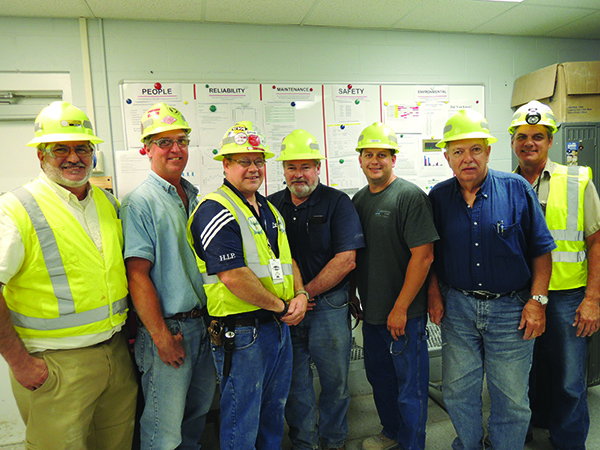
Members of the company’s Reliability and Maintenance Pillar Teams include (left to right) John Swafford, site maintenance manager; Jeff Zerwig, maintenance supervisor; Tom French, site reliability process leader; Cecil Burney, maintenance manager; Nathan Hooper, operations team leader; George Hall, maintenance planner; and D.J. Steagall, operations manager.
Milestones
As output and uptime continue to increase at Mississippi Lime, maintenance-and-reliability team members are keenly aware of the need to focus on on and move ahead with the programs they’ve worked hard to implement. “Our challenge is to maintain the progress we’ve made,” said Swafford. “But it’s all about the people. The better your selection of people, the better things will go. And the more people we get involved in the plant and our processes, the better our growth.”
For Sheffield, the advances made at the plant since his arrival are unique in his experience. “This isn’t the first time I’ve set up systems and worked through them,” he said. “I’ve also been to a lot of seminars and I’ve heard a lot of people talk about doing it, but around here we’re actually doing it. We don’t talk that much about it, but it’s becoming part of our culture.”
Confident he has the right people and programs to sustain their hard-won gains, French offered one more example of their attention to detail. “Just this week we’re doing a job on our crushing system,” he said, “and even though we haven’t done much work on this equipment, we had the drawings with documents and procedures, and the history of what we had done. Real data! We have metrics now we didn’t have before, and it’s an ‘all-in’ type of thing. It’s not just reliability, maintenance, engineering, or production; it’s a partnership that has paid off. It sometimes seems like we’re constantly going over what we were just teaching,” he added, “but you have to do that to sustain it. We’re living proof that this is a journey.” MT







